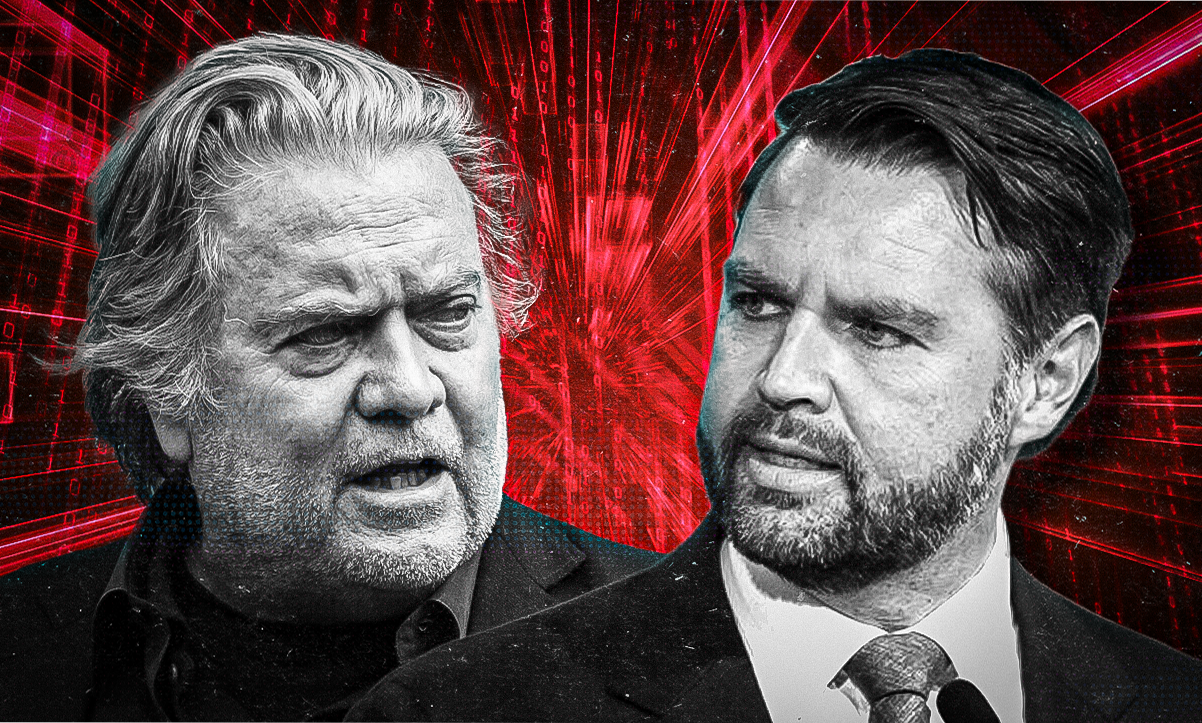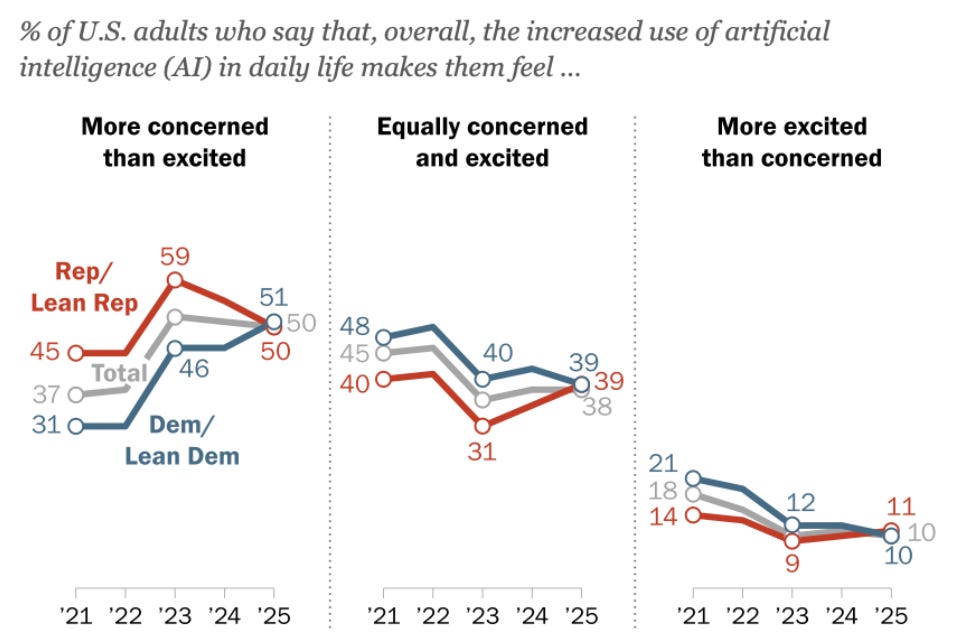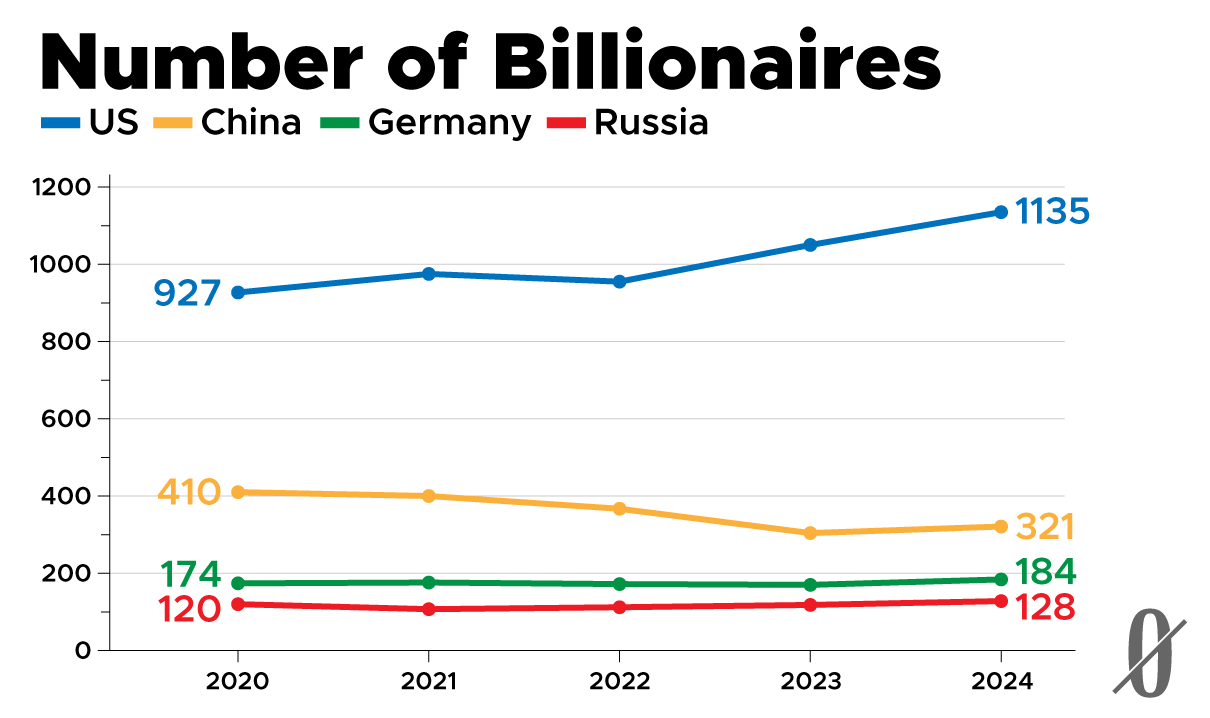The Intra-MAGA fight over AI
Plus: Musk-Trump love renewed; Fox News falls for deepfakes; Billionaire carbon spewers; Google in space; New DHS creepiness.
Notes: 1) The first meeting of the NonZero Reading Club will take place on Zoom on Saturday, November 15 at 1 pm US Eastern Time. See below (just beyond the lead item on MAGA and AI) for details and for the Zoom link. 2) Twenty years ago this week, Mickey Kaus and I launched the bloggingheads.tv platform (with critical tech support from Greg Dingle). Rather than commemorate that event by linking to our debut conversation, and thus confronting the awful truth about how much we’ve aged, Mickey and I decided to have a 20th anniversary conversation instead. It can be found in the NonZero podcast feed and on the NonZero YouTube channel. Feel free to honor the occasion by smashing the like button, rating and reviewing, etc.)
Since ChatGPT showed up in late 2022, there have been three high-profile statements, signed by many notables, urging caution in the development of AI: a March 2023 statement that called for a six-month pause in the training of powerful large language models; a May 2023 statement that deemed “extinction from AI” a risk that deserves as much attention as the risk of nuclear war; and a statement released last month that opposes the development of artificial “superintelligence” unless we can be confident that it will be safe.
There was something notable about the latest list of notables: It included not just many of the usual suspects (such as AI “godfathers” Geoffrey Hinton and Joshua Bengio) but MAGA media star and former Trump administration official Steve Bannon. Bannon’s conspicuous enlistment in the AI safety movement marks the emergence of a division within the MAGA coalition that will become more apparent over the next few years and could hurt JD Vance’s prospects for getting the Republican presidential nomination in 2028.
This split on the right, between AI optimists and AI worriers, was more or less inevitable. It’s rooted in the longstanding tension within conservatism between, on the one hand, libertarians and other free market enthusiasts, and, on the other, “Burkean” conservatives, who value tradition and view rapid change with suspicion. But the split got deeper when, during the 2024 campaign, libertarian tech bros like David Sacks joined the Trump coalition and Trump became more dependent on Silicon Valley money.
Vance, in a sense, embodies the split. His heritage—low-income working class Appalachian—naturally pulls him toward Burkean conservatism, but his escape from that world involved Silicon Valley benefactors like Peter Thiel and immersed him in venture capital culture. Vance’s highest profile AI speech as vice president—at the Paris AI Summit nine months ago—left little doubt about which side of his divided identity he would embrace. He said, “When conferences like this convene to discuss a cutting edge technology, oftentimes, I think, our response is to be too self-conscious, too risk-averse. But never have I encountered a breakthrough in tech that so clearly calls us to do precisely the opposite.”
You could have an interesting debate over whether the opposite of “too risk-averse” is “not risk-averse enough” or “too risk-seeking,” but neither of those looks to me like an appealing campaign slogan. And I’m guessing they’ll look even less appealing in three years, after the inevitably disruptive effects of AI sink in on various fronts.
In a May podcast conversation with Ross Douthat, Vance qualified his optimism a bit, registering concerns about AI’s effect on human relationships. But if AI proves as jarring in as many ways as I think it will, he’ll need to do a lot more course correction than that to endear himself to MAGA’s Burkeans—enough, probably, to alienate some of his Silicon Valley friends. And, whatever Vance says about AI from here on in, the video of his Paris speech—with its dismissal of concerns about job loss, its fiercely anti-regulatory tone—is in the archives, available to rivals for the 2028 Republican presidential nomination to deploy in ads.
This issue won’t be a problem only for Republicans. Democratic candidates too, have their Silicon Valley donors. And, at the grassroots level, both parties seem divided in their overall reaction to AI, as this Pew Research poll conducted in June illustrates:
Maybe it’s good news for Vance that this poll shows declining Republican concern about AI. But that decline came after Trump did his 180 on AI—went from reflecting anxieties about AI that he sensed in middle America to reflecting the boundless optimism of his new friends in Silicon Valley. It should probably worry Vance that Trump’s optimism didn’t prove more contagious among Republican voters—since Trump, after all, is Trump and Vance is just Vance.
Of course, the night is young. AI is only now starting to enter people’s lives in a significant way, and just about everyone will find something about it they like. But I think that, even if AI proves a huge blessing for most people in the long run, the next few years will involve a lot of AI-driven dislocation—economic, political, cultural, even moral and spiritual.
Politicians seem to be sensing that. Support for AI regulation is coming even from big names in the political party famous for being skeptical of regulation. It was Tennessee Senator Marsha Blackburn and Georgia Rep. Marjorie Taylor Greene—the “Queen of MAGA”—who this summer led the charge against a provision, snuck into a big tax bill by free marketeers, that would have prevented states from regulating AI. And weeks later Greene split with Trump over an executive order that paved the way for the construction of AI data centers on federal land.
In August, on the NonZero podcast, I talked to Joe Allen, who is the “transhumanism editor” for Bannon’s War Room podcast, which means he’s the closest thing to a regular technology commentator the War Room has. During my podcast’s Overtime segment, I brought up JD Vance’s Paris speech, and Allen (who signed last month’s superintelligence statement along with Bannon) had this to say:
Now about that NonZero Reading Club meeting: It will be led by NZN team member Danny Fenster and NZN community member Charles Alexander. Charles is the one who nominated the reading—chapter five of Norbert Wiener’s 1964 book Gods & Golem, Inc.,—in our Discord (where he goes by the name mucharles). The chapter, an early attempt to grapple with the implications of artificial intelligence, is available here. To join the Reading Club discussion, just follow this Zoom link at 1 pm EST on Saturday, November 15.
—RW
In defense of Fox News reporter Alba Cuebas-Fantauzzi: It’s not really accurate to say that she fabricated her story about outrageous things SNAP recipients were supposedly saying in response to the prospect that the government shutdown would cost them their food subsidies. It’s just that her story was based on fabrications. She assumed that AI-generated deepfake videos circulating on social media weren’t AI-generated deepfake videos. But they were, and Fox News had to retract the story.
Below are a few examples of the fake clips that have been circulating on social media recently, along with some comments they provoked. Judging by these and other clips we’ve seen, the fake-SNAP-recipients-video genre has a curious tendency to not accurately represent the actual ethnic composition of SNAP recipients (25 percent Black, 35 percent non-Hispanic White, 40 percent Hispanic, Asian, Native American, and other).
The average person in the richest 0.1 percent of humanity produces more carbon emissions in a single day than the average person in the bottom 50 percent of the wealth distribution does in an entire year, according to a new Oxfam report. This carbon gap has been growing since 1990; the carbon contributions of the super-rich have increased by 32 percent, while the contributions of the poorer half of the planet have fallen by three percent. “The climate crisis is an inequality crisis,” says Amitabh Behar, executive director of Oxfam International. “The very richest individuals in the world are funding and profiting from climate destruction, leaving the global majority to bear the fatal consequences of their unchecked power.”
And if you’re wondering where you’ll find these carbon-spewing elites: 43 percent of all billionaire wealth is in American hands, and China comes in second at 10 percent. (One American billionaire, Bill Gates, last week said that climate change isn’t as big a problem as many people say, and that more philanthropic attention should be focused on alleviating poverty and saving lives that are threatened by disease.)
The Department of Homeland Security has proposed a rule that would greatly expand the collection of biometric data—both the kinds of data collected and the number of people it’s collected from. The new rule would cover not just “any alien apprehended, arrested or encountered by DHS,” but anyone who applies for legal immigration—and lots of people connected to them. As the proposal puts it, “any applicant, petitioner, sponsor, supporter, derivative, dependent, beneficiary, or individual filing or associated with a benefit request or other request or collection of information, including US citizens, US nationals and lawful permanent residents, and without regard to age, must submit biometrics unless DHS otherwise exempts the requirement.”
Rather than hire a lawyer to make sure this rule would cast as broad a net as it sounds like, NZN enlisted Google’s Gemini AI, which, after perusing the whole DHS proposal, consulting other sources, and thinking a while, said, “In summary, the proposal aims to cover nearly everyone who files, or is named in, almost any request or form processed by the US Customs and Immigration Service, unless they are specifically exempted.” Also, whereas people under the age of 14 are currently exempted by default, they would be included by default.
The rule would also broaden the meaning of “biometrics”—currently understood as fingerprints, photographs, and signatures—to include palm prints, retina scans, voice samples, and DNA samples (used to, among other things, verify family ties or biological sex).
Remember when, back in June, Elon Musk tweeted that it was “Time to drop the really big bomb”—that Donald Trump was implicated in the Epstein files? And when, a month later, Musk vowed to launch his own political party in protest over Trump’s Big Beautiful Bill?
Ah, good times. But they seem to be over. This week, mere months after the thrilling summertime climax of the disintegration of the Musk-Trump alliance, the two men seemed to again be working hand in glove.






